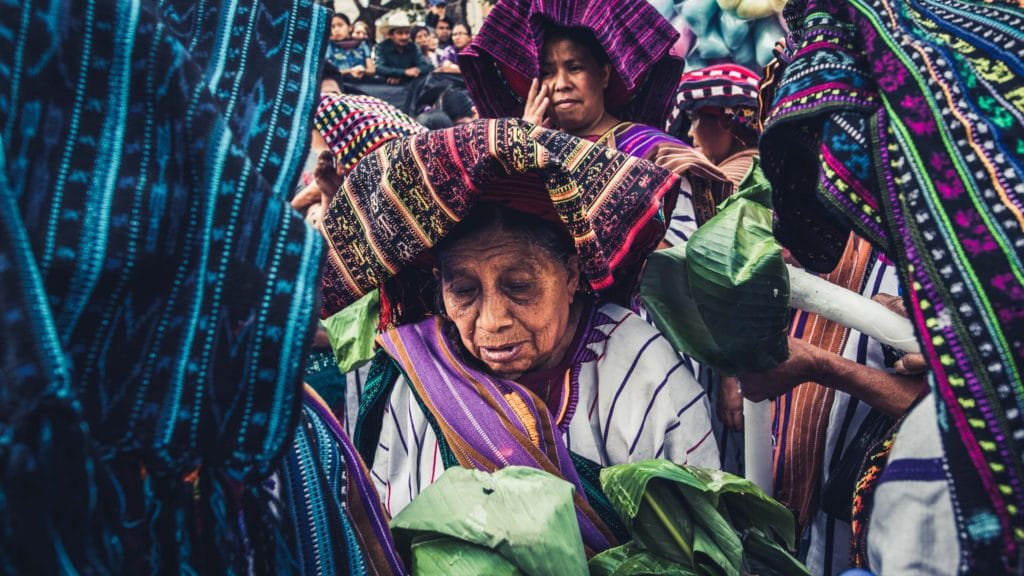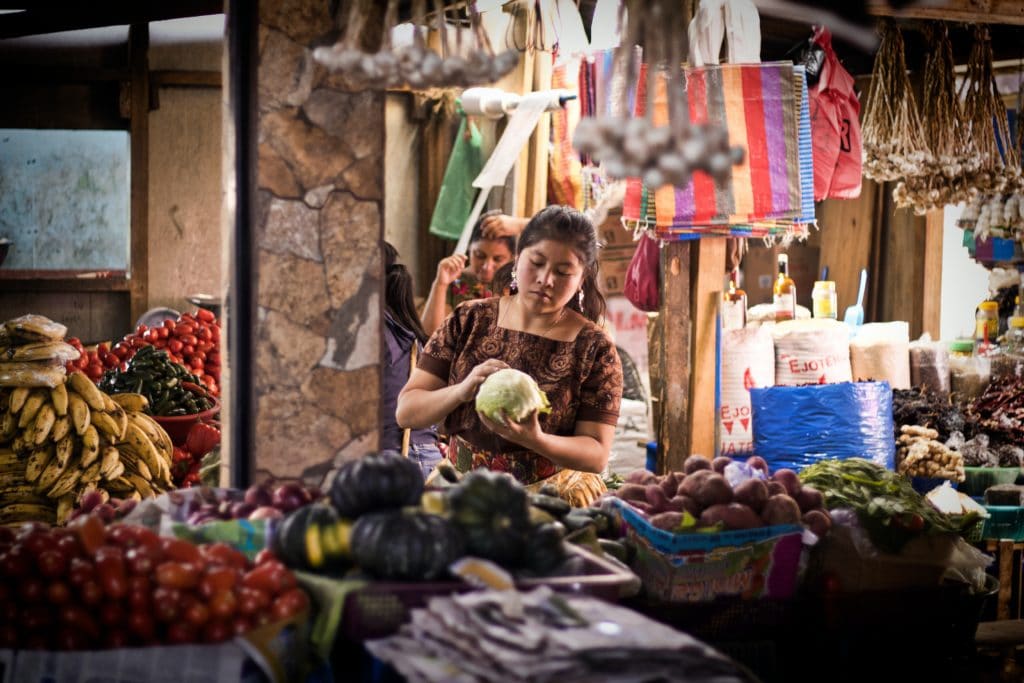Although Guatemalans have settled in the United States throughout the last century, they’ve recently increased their numbers. Reviewing a brief history of Guatemalan immigration to the U.S. can help you stay informed of this vibrant community.
Like other immigrant communities, Guatemalans move across borders for increased economic opportunities while continuing to support loved ones back home. When they come to the U.S., many Guatemalans settle in just a few major regions. Review this Remitly guide to learn more about where they live, why they come, and how they contribute to the U.S.
Guatemalans in the U.S.
The Guatemalan population in the U.S. is relatively small. Most estimates put the population of Guatemalan migrants in the U.S. at around 1.8 million.
According to 2022 census data, Guatemalans are the 10th largest immigrant population in the U.S. and the third largest immigrant group from Central America.
Guatemalans are exceptionally diverse. Multiple ethnic groups in the country speak dozens of languages. Around 42% of Guatemalans are Mayan and have distinct cultural traditions from those of Ladino (mixed indigenous and Spanish) Guatemalans.
Many Guatemalan Americans appear to assimilate with other Central American immigrant groups or Latin American communities whose holidays, foods, languages, art, and music are similar.
Why do Guatemalans emigrate?
The history of Guatemalan emigration to the U.S. dates back at least a century, but the vast majority of the movement occurred in the last fifty years.
Scholars identify two distinct phases of migration: displacement of Guatemalans during the country’s long civil war (1960-1996) and economic migration in the post-war era.
Between 1960 and 1996, over 400,000 Guatemalans fled to the U.S., Mexico, and Canada due to the civil war. Migrants included student and union leaders, intellectuals, and others displaced by political oppression.
Migration figures rose with the intensification of violence from the late ‘70s through the ’80s. There was also a spike following a devastating earthquake in 1976. Rates were steady at about 40,000 Guatemalans per year through the 1990s.
In the post-war era, migration rates from Guatemala to the U.S. increased. Incentives to emigrate are largely economic—Guatemala has been poor compared to developed nations due to high unemployment rates and underemployment.
Other factors driving Guatemalan immigration to the U.S. include political instability and social violence. A series of natural disasters, including devastating hurricanes in 1998, 2005, and 2010-2011, and an earthquake in 2012, each resulted in a migration spike. The Migration Policy Institute also reports that the effects of climate change have led rural people from Guatemala and other Central American nations to immigrate to the U.S.

Bigger picture
The true picture of the Guatemalan population in the U.S. is more complicated than data suggests. Some Guatemalans come as students, including Guatemala City-born Luis von Ahn, the tech developer who launched Duolingo and reCAPTCHA, and is now a professor at Carnegie Mellon University in Pittsburgh.
Family reunification is another key factor drawing Guatemalans to the U.S., as many recent Guatemalan immigrants relocated to live with immediate relatives who’ve already entered the country through legal migration pathways.
The figure of 1.8 million Guatemalan-born residents in the U.S. doesn’t include second, third, and subsequent generations who identify as Guatemalan-American.
Data on remittances shows that Guatemalan Americans retain solid ties with family members back in Guatemala, although few intend to return. Remittances are an important source of support in Guatemala, totaling $4.4 billion by 2012 and comprising over 11% of the country’s GDP, according to 2016 data.

Facts about Guatemalan Americans
Like other Central American immigrants, Guatemalans living in the U.S. are a diverse group of people. Here’s how Guatemalan Americans compare to other Central American immigrants:
Immigration
According to immigration statistics, around 58% of Guatemalan Americans were born outside the U.S. By comparison, only 32% of the total population of Hispanics in the U.S. was born in Latin America or other regions outside the U.S.
Around 36% of the foreign-born population of Guatemalan Americans has been in the U.S. for over 20 years.
Many foreign-born immigrants of Guatemalan origin entered the U.S. through legal pathways, and more than a quarter of them are U.S. citizens. Others may hold lawful permanent resident status (green cards) or have refugee status because they sought political asylum like other Central American refugees.
Not all Guatemalans residing legally in the U.S. intend to remain permanently. Some left Guatemala due to extreme poverty and currently hold temporary work visas that allow them to work in the U.S. for a limited time. When their visas end, these Guatemalan migrants may apply for an extension or return home.
Illegal immigration does account for some of the population of foreign-born Guatemalan Americans. However, there aren’t good immigration statistics to know the size of that group.
Around 3% of all applications for Deferred Action for Childhood Arrivals (DACA) status were Guatemalan Americans. This program is for adult immigrants who entered the U.S. through pathways outside of normal immigration law when they were minors and helps to protect against deportation.
Education
Compared to the entire Hispanic population in the U.S., Guatemalan Americans are less likely to continue onto higher education. Only 11% of Guatemalans hold a bachelor’s degree, compared to 20% of all Hispanic people in the U.S. Having a college education is more common among Guatemalans born in the U.S. rather than abroad.
Income
The median household income for Guatemalans in the U.S. is $25,000—17% less than the median for all U.S. residents of Hispanic origin. Many Guatemalans in the U.S. earn significantly less than that with around 23% of the population earning incomes below the poverty line.
Age and marital status
The median age of Guatemalan Americans is 26.6 years, making the population younger compared to the Hispanic immigrant population, which has a median age of 29.5 years. By comparison, the median across all Americans is 37.8 years.
Around 44% of Guatemalan Americans over the age of 18 are married, and members of the foreign-born population of Guatemalans are more likely to be married than those born in the U.S.
Where do Guatemalans live in the U.S.?
The vast majority of Guatemalans living in the U.S. are in Southern California and the Northeast.
Southern California
According to Migration Policy Institute data, as of 2019, the largest Guatemalan American and Guatemalan-born community in the U.S. is in Los Angeles County with 175,600 people. LA is home to the largest Guatemalan population outside of Guatemala.
In 2019, LA’s neighboring Orange, Riverside, and San Bernardino counties added 13,600, 13,200, and 11,500 Guatemalans, respectively. In the Los Angeles-Long Beach-Anaheim metropolitan statistical area, 1.4% of the total population was born in Guatemala.
Not widely known even to Angelenos, a section of the Westlake neighborhood in LA is dubbed “Little Guatemala” by locals. Its night market gives Guatemalan Americans a familiar taste of authentic garnachas, tamales, pupusas, tacos, and fried platano.
Rep. Norma Torres, who was born in Guatemala and came to the U.S. as a child, represents California’s 35th district in Congress. She’s previously served as the Mayor of Pomona and in the California State Senate and State Assembly.
Another notable Guatemalan American raised in LA is Manny Marroquin, a 10-time Grammy Award-winning sound engineer.
Some SoCal organizations focusing on the Guatemalan immigrant experience include Maya Vision, a community and cultural support group founded by Maya refugees from Guatemala. The group’s mission is to help preserve and strengthen Maya cultural traditions.
Mundo Maya Foundation also works with Maya populations from Guatemala, Mexico, El Salvador, and Honduras living in the LA area. It hosts the annual Mundo Maya Day to celebrate indigenous Maya culture, music, dance, food, and sports.
Guatemalans have also begun to move to the San Francisco Bay area in significant numbers over the past decade.

Other Guatemalan population centers in the U.S.
Outside Southern California, there are sizable Guatemalan population centers in the Northeast and Florida.
New York City metro area
As of writing, the New York-Newark-Jersey City area is home to 90,000 Guatemalan-born residents; the Washington, D.C.-Arlington-Alexandria area has 51,000 residents; and in Florida, the Miami-Fort Lauderdale-Pompano Beach area has 47,000 residents born in Guatemala.
Miami
The Miami and Palm Beach areas have significant Guatemalan hubs within their diverse Latin communities.
The Guatemalan-Maya Center is a nonprofit advocacy group that has served the Guatemalan Maya community in Palm Beach County for more than 30 years.
Guatemala-born actor Oscar Isaac was raised in Miami and is famous for starring in blockbuster movies including X-Men: Apocalypse, Star Wars: The Force Awakens, Inside Llewyn Davis, and Ex Machina.
Houston
Houston, Texas, is a city of immigrants, with one in four people having been born outside of the U.S. There are more than 39,000 Guatemalans in the city, making Guatemalan Americans the fourth-largest group of Central American immigrants.
Every year, many Guatemalan Americans celebrate their heritage at the Festival Chapin En Houston. This food and music festival usually takes place in September and draws thousands of Houstonians.
Because so many Guatemalans live in Houston, the city is also home to several Guatemalan restaurants, grocery stores, and bakeries.
Chicago
According to historical census statistics published by the U.S. Census Bureau, only 13,000 Guatemalans live in Chicago. However, experts estimate that the actual number is likely tens of thousands more.
The difference between reported and actual numbers is due to irregular migration. Many migrants looking for economic opportunity who enter the U.S. outside of normal pathways may fail to respond to census-taking questionnaires due to fear of deportation.
Many Guatemalan Americans live in the Chicago neighborhoods of Rogers Park, Albany Park, Logan Square, and Uptown, and there’s a significant Guatemalan population in the nearby suburb of Elgin.
Indigenous Guatemalan communities in the U.S.
As previously mentioned, indigenous people make up a significant portion of the Guatemalan-American population. Around 8.7% of all Americans who identify as indigenous are from Guatemala, and there are significant communities of Guatemalan indigenous groups in certain U.S. cities.
Arlington, Virginia, is home to a thriving Mam community, while a significant population of Q’anjob’al indigenous people have settled in Indiantown, FL. In Chattanooga, Tennessee, there are both Q’anjob’al and Mam communities.
K’iche indigenous people are one of the largest indigenous groups among Guatemalan migrants. Saluda, South Carolina; Providence, Rhode Island; New Bedford, Massachusetts; and Saluda and Los Angeles, California, have significant K’iche populations.
Remitly serves the Guatemalan American community
Guatemalan Americans are a broad class of people who contribute to the culture and economic success of the U.S. While experts are unlikely to determine the root causes of Guatemalan immigration to the U.S. in the near future, they anticipate a continued rise in the number of Guatemalan Americans. They also expect their positive impact on the U.S. to increase even further.
Remitly is proud to serve those who immigrated from Guatemala, the rest of Central America, and beyond. We make it possible for Central American immigrants to send money home to their loved ones quickly, safely, and affordably. Download the app today to learn more and get started sending money to Guatemala.

